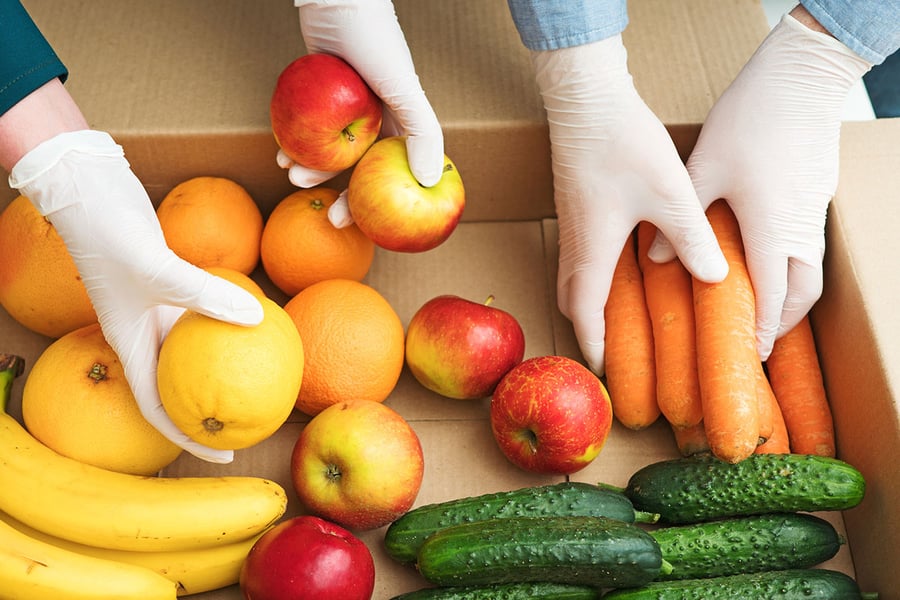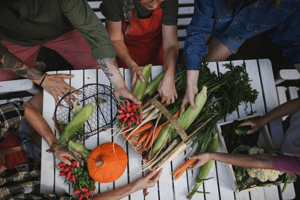Addressing Food Insecurity by Supporting Farm-to-Food Bank Initiatives
January 26, 2023 Posted by Jesse M. Ehrenfeld, MD, MPH

To learn more about this funded project, click here.
Wisconsin is well-known for our rich soil and farmland. So why are so many Wisconsin residents experiencing hunger and food insecurity?
The problem is more about distribution than production. And like so many of Wisconsin’s challenges, people of color and low-income rural and urban folks experience more challenges getting fresh foods into their homes and on their tables.
That’s why we are excited to share the work of partners implementing innovative solutions to increase access to fresh fruits and vegetables. How are organizations in Wisconsin addressing food insecurity?
The Challenge of Food Insecurity
Our partners at Feeding America share the following stats on hunger in our state.
-
More than 400,000 people face hunger each year—one in 14 residents.
-
160,890 of them are children—one in 8 kids.
Even with the money distributed through the federal Supplemental Nutrition Assistance Program (SNAP) and food pantries, a gap exists.
Food insecurity is also an equity issue.
Let’s think about the two common sources of food for low-income populations: food pantries and farmers markets.
Pantries often provide shelf-stable staples, but have limited offerings of fresh, high-quality produce.
And barriers keep some low-income people from accessing resources from food pantries. They might have to register, prove their address, verify their income, or provide some other form of documentation that makes them feel vulnerable. The power dynamic between those providing and receiving food can erode trust and self-esteem.
Farmers markets have an abundance of fresh foods and vegetables, but shopping at markets is not always convenient or affordable for low-income people. Transportation, language barriers, and unfamiliarity with the culture of markets stand in the way of accessibility. Some markets allow SNAP users to purchase Market Bucks. But those programs are not accessible to people who are undocumented.
Clearly, there is a need for a system that can get healthy food to the people who need it most.
From Farm to Food Bank
Feeding America Eastern Wisconsin is a nonprofit that has received funding from AHW for a project called Using Food Hubs to Improve Community Health by Getting Better Food to More People.
The organization has been distributing food to needy Wisconsinites for more than 40 years. It runs food banks in Milwaukee and Appleton. It also distributes and transports food to more than 400 pantries in 35 counties.
Feeding America Eastern Wisconsin received a grant from the Advancing a Healthier Wisconsin (AHW) Endowment to support Farm Link, a farm-to-food bank initiative that is improving access to fresh fruits and vegetables while also supporting local farmers. Each year, their farm network supplies pantries with more than 200,000 of fresh, locally grown produce.
Important Connections
Farm Link is a community food hub that connects local producers to institutional buyers and hunger-relief programs. Since receiving AHW funding, Farm Link has
-
Formed and maintained relationships with four contract growing farms: Riverview Gardens in Appleton, Springdale Farm in Plymouth, Healthy Harvest Farm in Menomonee Falls, and Johnsen Farm in Fransksville.
-
Helped distribute 190,000 pounds of produce to Wisconsin’s hunger relief organizations.
-
Launched Farm Link newsletter, which includes project updates, stories, and healthy recipes.
-
Implemented Diabetic Friendly Food Boxes
Farm Link is doing such a great job forging these critical connections that the organization has been asked to present at conferences across the country.
A Healthier Wisconsin
By pulling together a group of excellent community partners, this project is shortening the time it takes to get high-quality produce to food relief organizations.
At the same time, Food Link creates additional opportunities for farmers to do what they do best: grow and supply healthy food.
More families are able to sit down to eat healthy meals together, and to enjoy the benefits of Wisconsin’s strong producer community.




